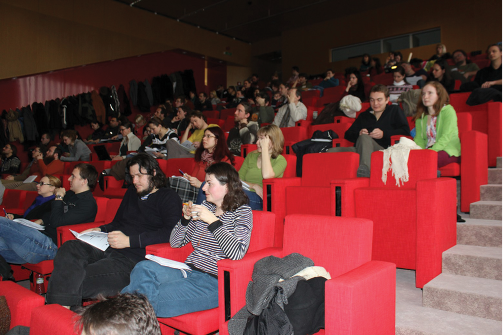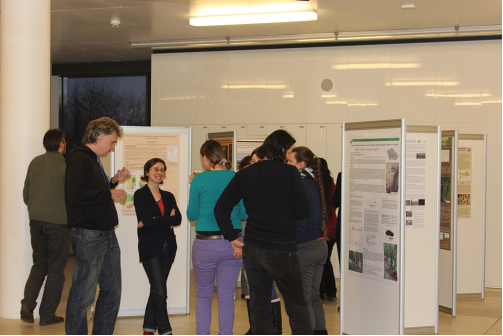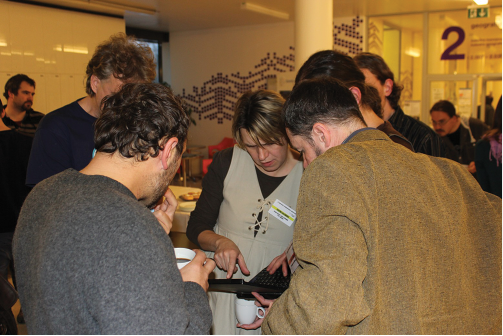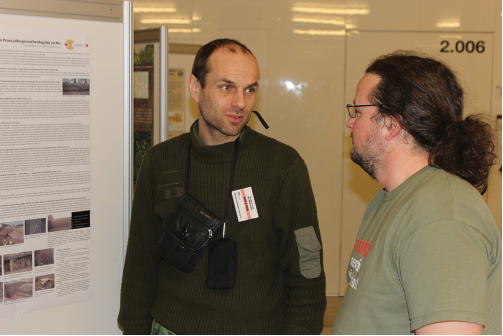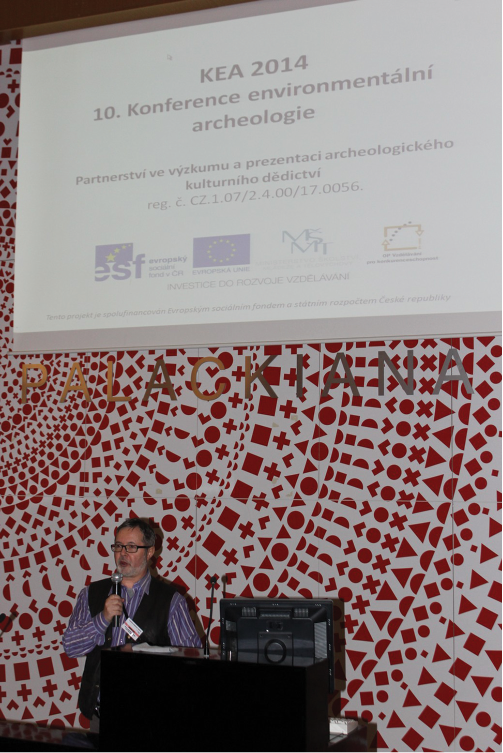
Volume V ● Issue 1/2014 ● Pages 3–4
Editorial IANSA 1/2014
Olomouc = Interdisciplinarity in Archaeology, not only on Paper…
The 10th Conference of Environmental Archaeology – KEA 2014
Pavlína Kalábková
When we began to prepare for the accreditation of Archaeology at the Palacký University Olomouc ten years ago, we were planning to lay the groundwork for archaeology which would be of use in common practice. By common practice we meant the hundreds of advanced rescue archaeological surveys carried out in the Czech Republic every year. It had already become evident at that time that current archaeology is not an academic science which should be enclosed in reading rooms and libraries of institutes and that a well-done field survey is the most significant part of all archaeological knowledge. It was also apparent that current archaeology uses a whole range of interdisciplinary, particularly environmental fields, for the research (starting with field surveys) and that there is a need to intentionally acquaint students with them. The environment has consequently become an integral part of the study programme and individual branches (physical anthropology, archaeozoology, petroarchaeology, archaeobotany) have been incorporated into mandatory courses. In addition, a series of specialised lectures from interdisciplinary fields of study, which take into account the most recent trends in the science, have been integrated into the study programme and are being offered to students depending on the possibilities. It has become apparent that our vision of archaeological study has been of interest, not only for the accreditation committee, but also for students. This area of study has consequently begun in the archaeological section at the Department of History at the Philosophical Faculty of Palacký University Olomouc as of 2007. It has continued up until the present and will hopefully continue to develop successfully.
Our interdisciplinary aim, involving environmental archaeological research, has also become evident in terms of the greater engagement of the Faculty of Science of Palacký University. We have been successful in the gradual establishment of an archaeometric laboratory there as of 2010. This laboratory makes use of both the academic potential of their researchers and their technical equipment. An archaeobotanist and a petroarchaeologist already work there in the area of archaeology and are also able to take advantage of the laboratories for analytical chemistry, geology, pedology or geophysics and geoinformatics for various analysis needs. The quality of archaeometry at Palacký University is currently known to regional archaeological institutes, primarily the Archaeological Centre Olomouc and the National Heritage Institute Olomouc. We are convinced, however, that its circle of customers will gradually widen and that the services will be offered to additional interested parties.
The next example concerning the serious intentions as regards interdisciplinarity in Olomouc is the birth and support of this IANSA journal. The Archaeological Centre Olomouc and both the Philosophical Faculty and the Science Faculty of Palacký University participate in the financial funding for each issue and their employees contribute their articles to the journal. The contributions from Olomouc are not all that numerous but the efforts are genuinely sincere.
One of the most recent visible results of our work, or actually cooperation between the archaeological and archaeometric centres under the umbrella of the University in Olomouc, was the organisation of the 10th Conference of Environmental Archaeology – KEA 2014 with the subtitle The Archaeology of Food and Drink (www.kea2014.upol.cz). This took place on 27th and 28th January 2014 in the auditorium of the Science Faculty of Palacký University Olomouc. 102 participants came, 28 papers were presented, 16 posters were shown and a collection of abstracts of the papers was published. The organisation of the conference was also supported by the ESF project – Partnership in Research and Presentation of Archaeological Heritage (reg. CZ 1.07/2.4.00/17.0056).
The papers were divided into panels: Plants as a source of food, Animals as a source of food, Food and drink as a reflection of social status, Preparation of food and drink, Analysis of leftovers, Feeding animals and environmental archaeology (not only) in Central Moravia. Each panel consisted of several papers. The most interesting contributions, in the present author’s opinion were those of Jaromír Beneš concerning nutrition in the Stone Age, Tomáš Sommer dealing with famine in Bohemia over the years 1316–1318, Michal Hejcman (et al.) concerning the significance of wood as feed for livestock, Petr Kočár (et al.) about the reconstruction of forest vegetation from the Neolithic to the Migration Period, Jan Pavelka and Ladislav Šmejda focused on an analysis of leftovers preserved in ceramic vessels and finally Zdeňka Nerudová about the food of a Palaeolithic man. A wide range of additional attractive topics were also discussed but there is no room to mention all of them. Additional information can be found on the following pages of this issue of the IANSA journal as it is dedicated specifically to papers which were either presented there or inspired by the conference itself. KEA 2014 has come to an end, long live KEA 2015 and may interdisciplinarity be further developed in Olomouc archaeology and beyond!

Figure 1. Jaromír Beneš at the launching of the KEA 2014 conference.
Figure 2. An almost full conference hall.
Figure 3. Presentation of posters and Lenka Kovačiková discussing her work.
Figure 4. A group at the discussion – Pavlína Kalábková, Martin Moník, Jaroslav Peška, Petr Pokorný and Jan Novák.
Figure 5. Michal Hejcman and Petr Kočár at the discussion.
